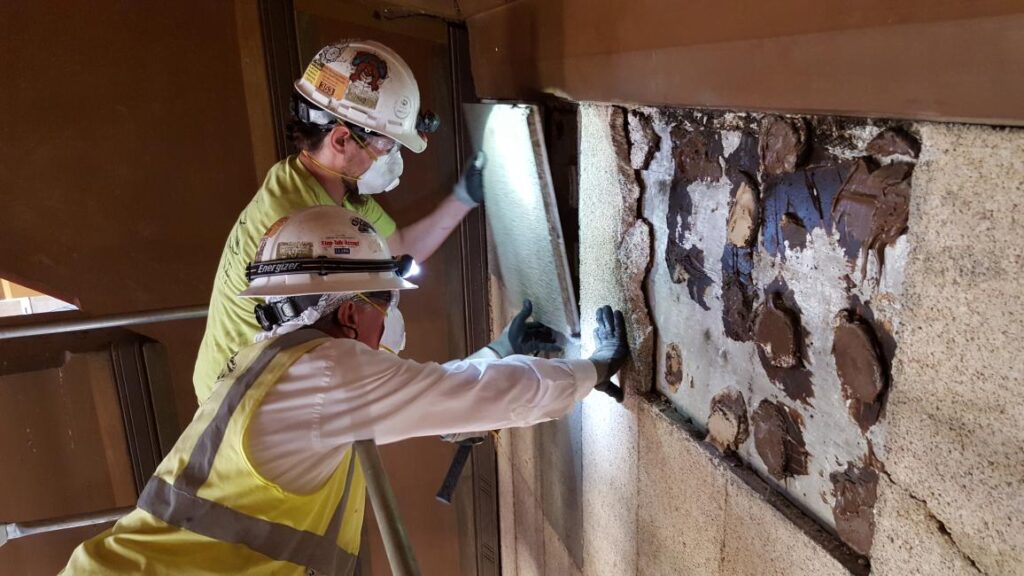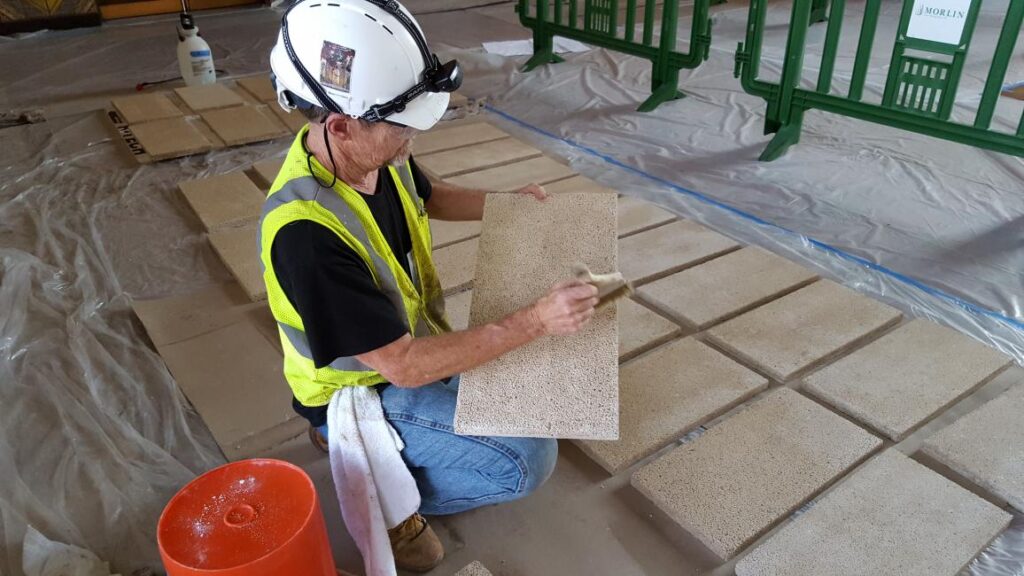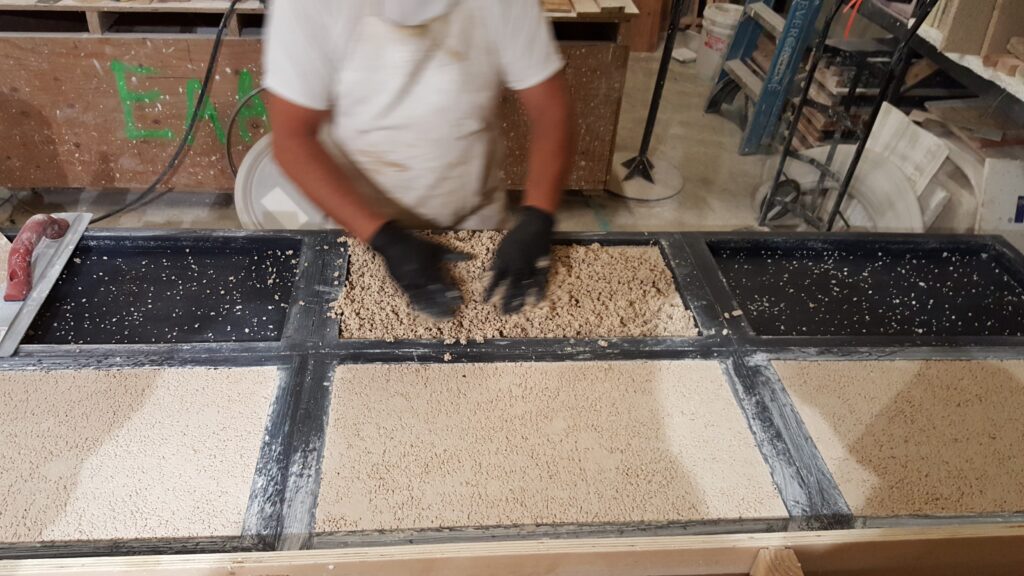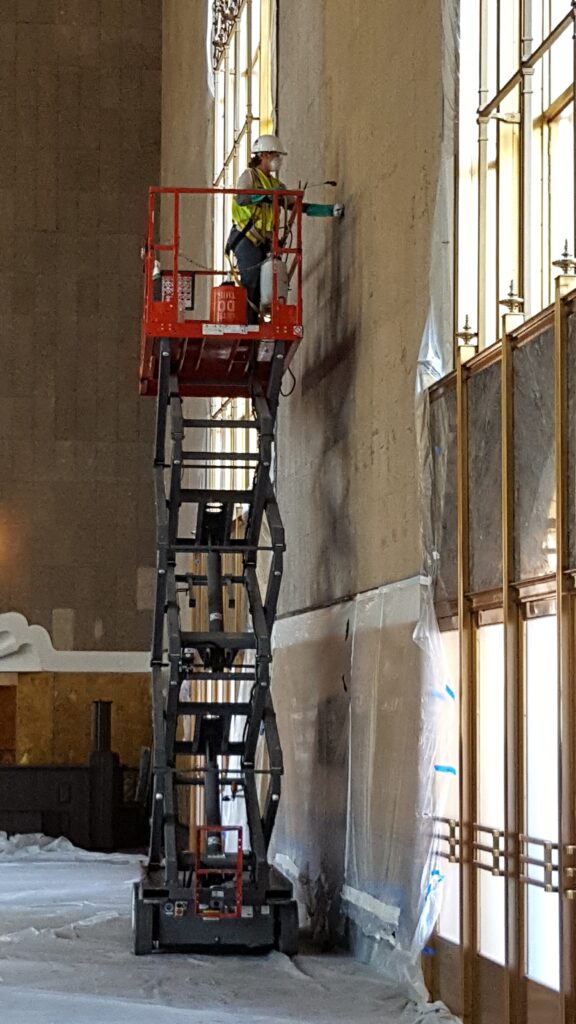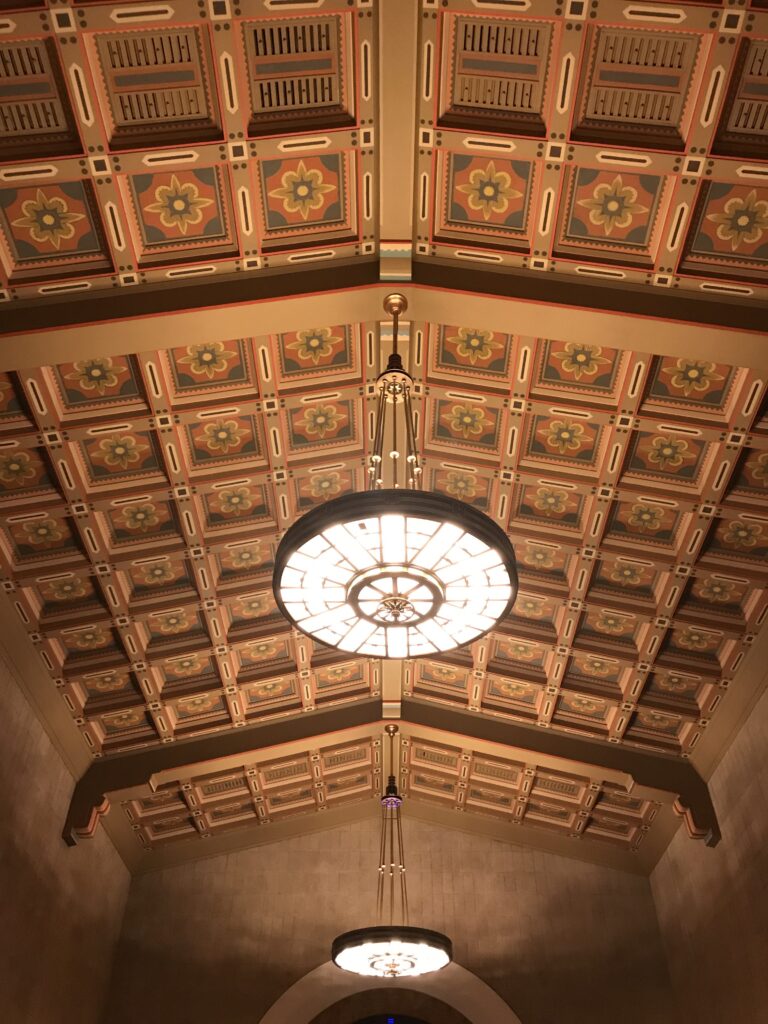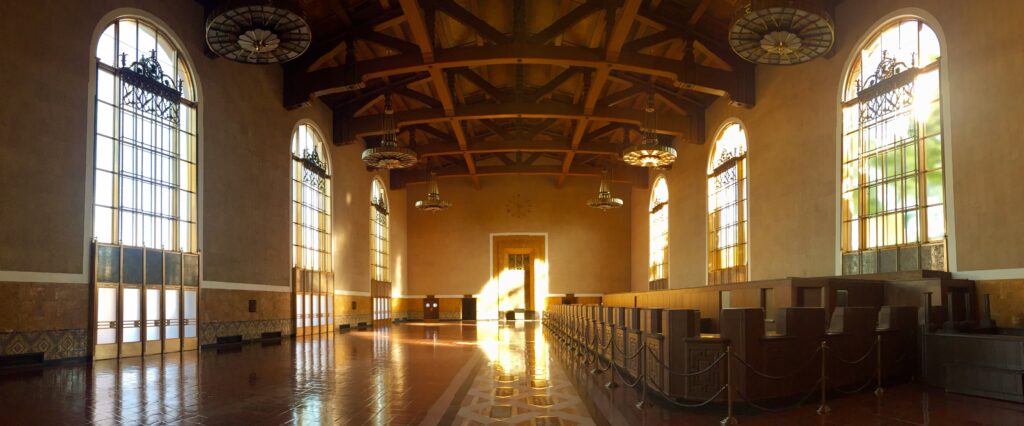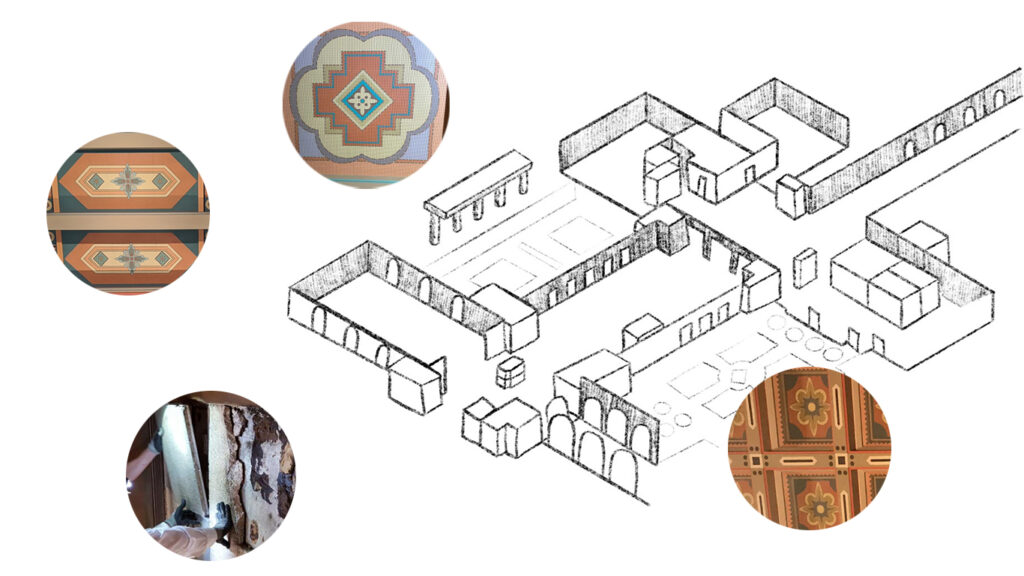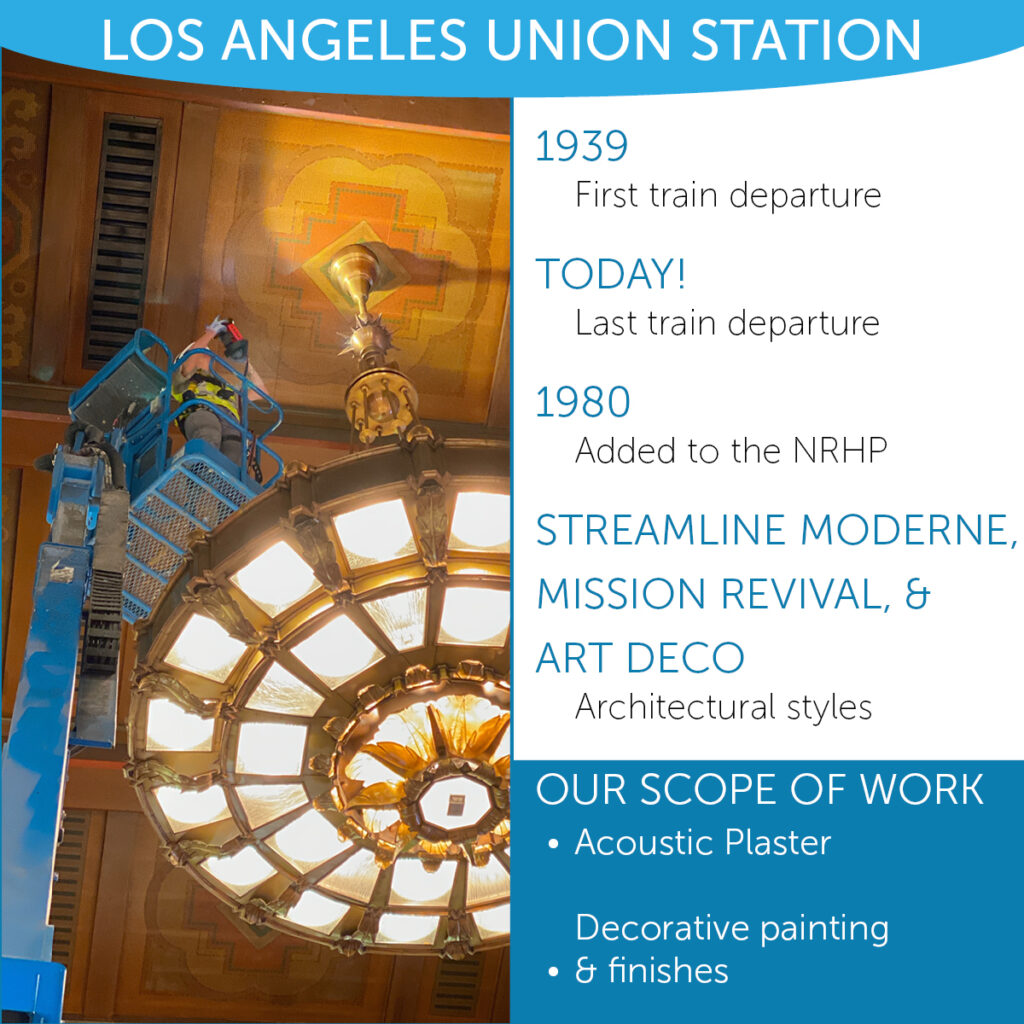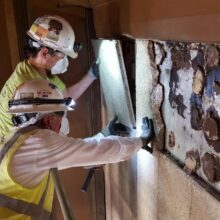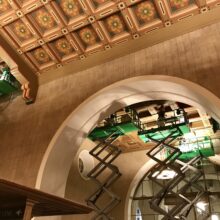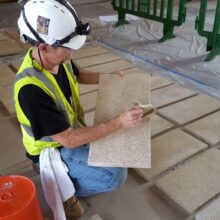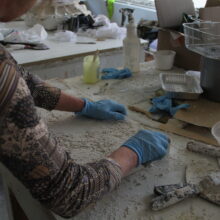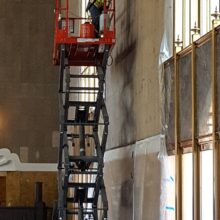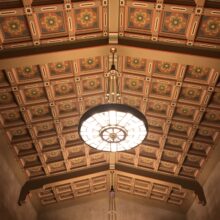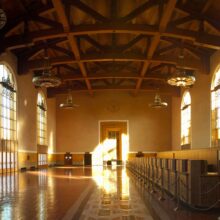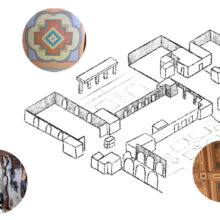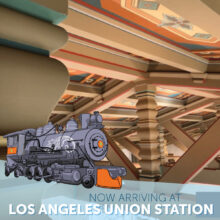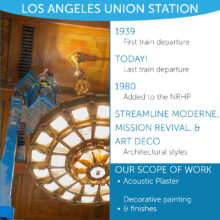Acoustic Tile Restoration
The acoustic tile restoration at Los Angeles Union Station is the first of three phases to EverGreene’s contribution to the revitalization of the station. In the second and third phases, we restored the ceiling tiles of the Ticketing Concourse and the Entry Vestibule and Grand Waiting Room.
Los Angeles Union Station, also known as the Los Angeles Passenger Terminal, became the largest train station in the west after its completion in 1939. It was designed by architects John and Donald B. Parkinson in a Spanish Revival style combining Art Deco, Mission Revival, and Streamline Moderne. Throughout World War II, it was a bustling hub for soldiers, but shortly after the war when rail travel began to decline in lieu of cars and planes, the station came to be known as the last of the grand railroad terminals. It was designated as a Los Angeles Historic-Cultural Monument in 1972 and added to the National Register of Historic Places in 1980.
The Los Angeles Union Station is now a transportation hub for rail, light rail, and bus service in Southern California, and was acquired by Los Angeles County Metropolitan Transportation Authority (Metro) in 2011. In 2014, Metro began to replenish the building, as it had suffered damages from decades of nicotine and environmental pollutants. The restoration of Union Station is part of an overall renaissance for downtown Los Angeles.
EverGreene conserved, cleaned, repaired, duplicated, and restored many of the acoustic tiles in the massive 11,200 square foot Grand Waiting Room, the 16,800 square foot Ticketing Concourse, and the Entry Vestibule. Many of the acoustic tiles which were fabricated out of calicel, an expanded stone aggregate, had deteriorated and needed to be replaced. Calicel however is no longer in use and no formula was available to recreate the acoustic dampening material.
EverGreene’s plaster craftsmen, technicians, artists, and conservators collaborated to develop a sample tile to replicate the original color, texture, aggregate, and thickness of the original tile. Many samples were developed using additives that ranged from pumice to household materials and a mock-up was installed prior to deciding on the proper formula. In all, more than 232 replacement tiles were cast on-site and the remaining wall tiles were cleaned or repaired. Once the cleaning and repairs were completed, the new tiles were virtually indistinguishable from the historic.

